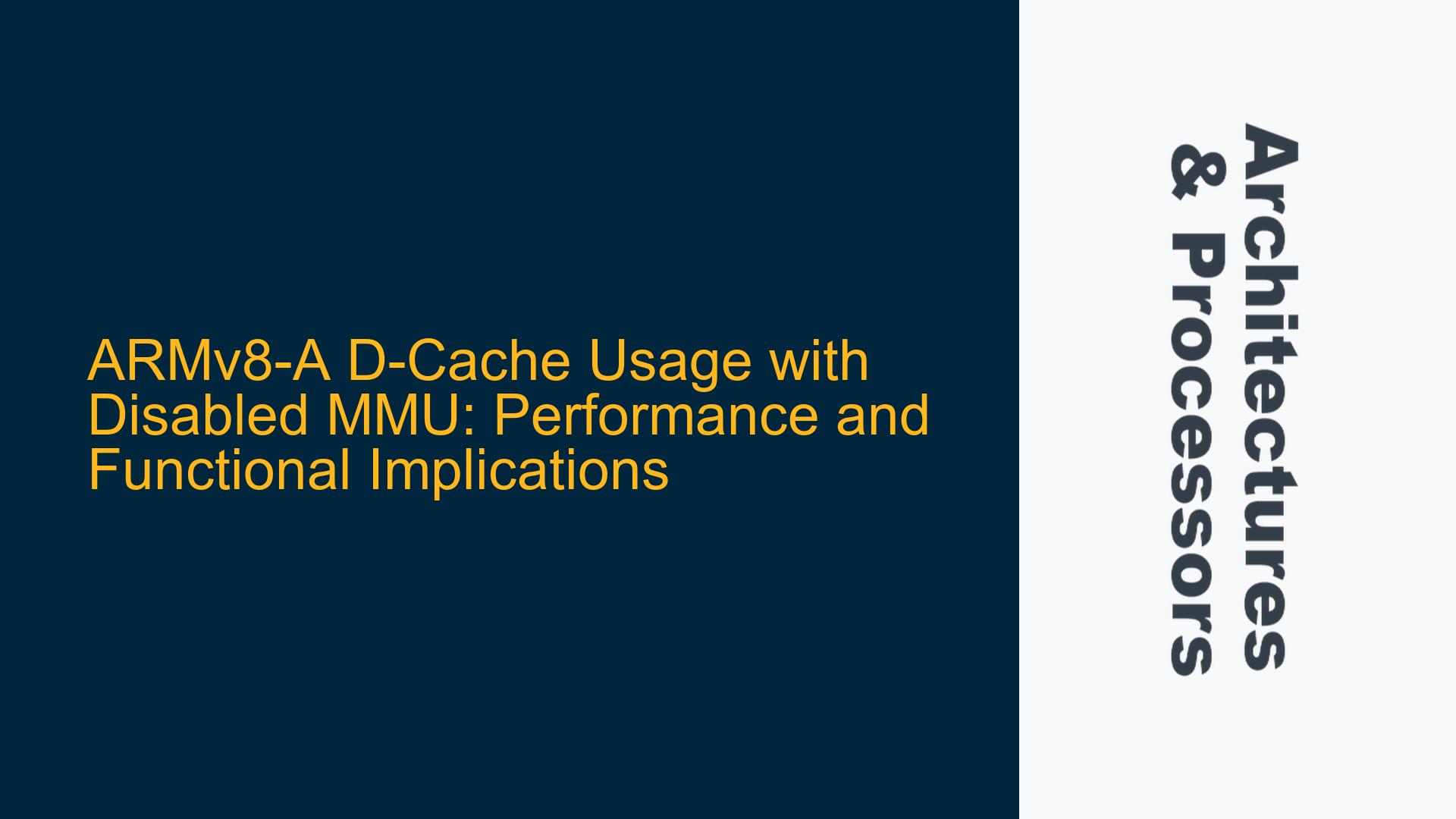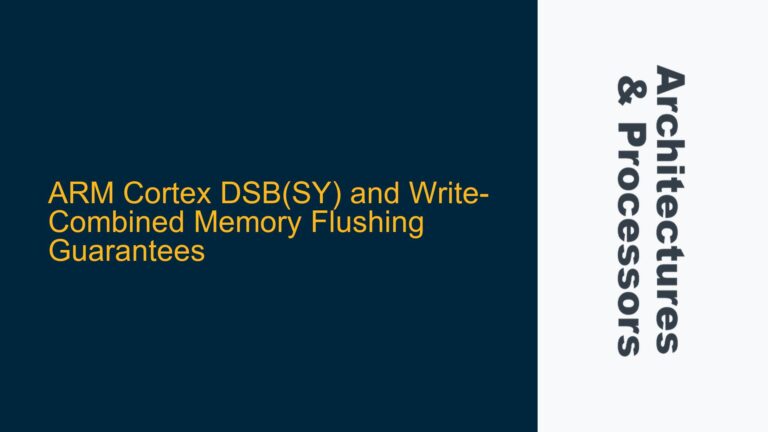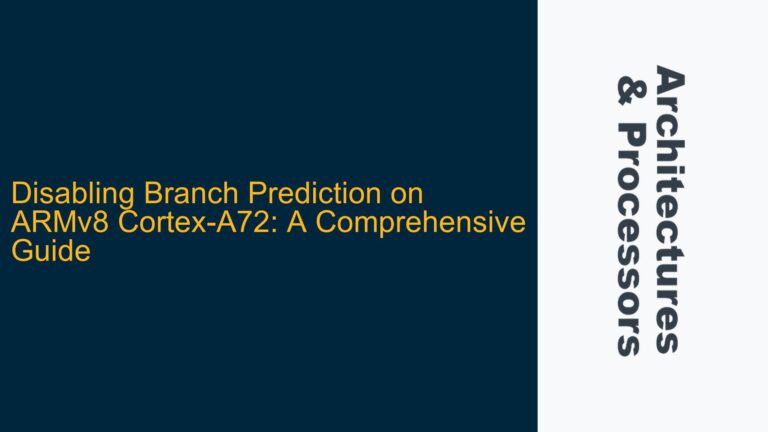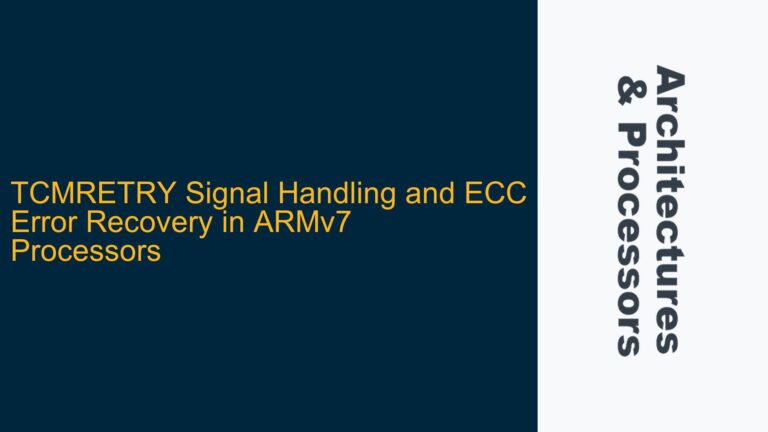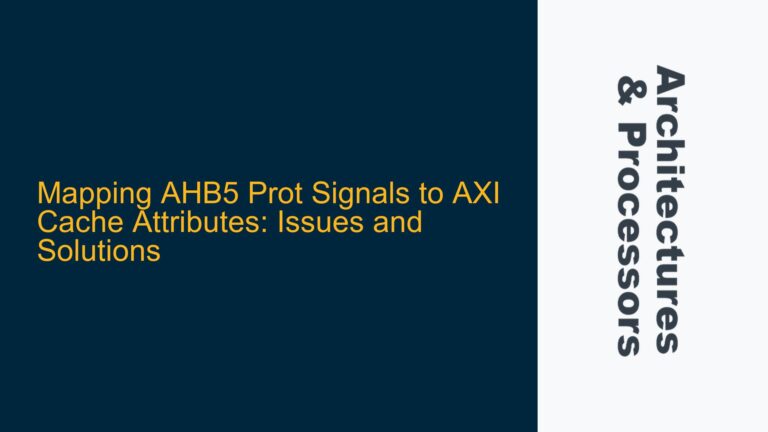ARMv8-A D-Cache Behavior When MMU is Disabled
In ARMv8-A architectures, the relationship between the Memory Management Unit (MMU) and the Data Cache (D-Cache) is tightly coupled, and understanding this relationship is critical for optimizing system performance and ensuring correct functionality. When the MMU is disabled, the system treats all memory accesses as if they are directed to Device-nGnRnE memory. This memory type is non-cacheable, non-gathering, non-reordering, and non-early-acknowledgment, which fundamentally changes how the D-Cache operates.
The ARMv8-A architecture reference manual specifies that memory locations without the Normal Cacheable attribute are not allocated into the cache. This means that when the MMU is disabled, all data accesses are treated as Device memory accesses, and the D-Cache cannot be used to cache these accesses. This behavior is rooted in the architecture’s design to ensure memory consistency and prevent speculative accesses to Device memory, which could lead to undefined behavior or system instability.
The implications of this behavior are significant. Without the MMU enabled, the system cannot leverage the performance benefits of the D-Cache, such as reduced latency for frequently accessed data and improved overall throughput. Additionally, features like speculative prefetching, which rely on the Normal Cacheable memory type, are also disabled. This results in a substantial performance penalty, as the core must fetch data directly from memory for every access, increasing latency and reducing efficiency.
Memory Type Assignment and Cacheability in ARMv8-A
The assignment of memory types in ARMv8-A is a key factor in determining whether data can be cached. When the MMU is disabled, the architecture defaults to treating all memory accesses as Device-nGnRnE. This memory type is designed for peripherals and memory-mapped I/O, where strict ordering and non-cacheable behavior are required to ensure correct operation.
The Normal Cacheable memory type, on the other hand, is required for data to be allocated into the D-Cache. This memory type allows the cache to store data temporarily, reducing the need for repeated memory accesses and improving performance. However, this memory type can only be assigned when the MMU is enabled, as the MMU is responsible for translating virtual addresses to physical addresses and assigning memory attributes, including cacheability.
The distinction between Device-nGnRnE and Normal Cacheable memory types is critical for understanding why the D-Cache cannot be used when the MMU is disabled. Device-nGnRnE memory accesses bypass the cache entirely, ensuring that every access is performed directly on the memory or peripheral. This behavior is necessary for maintaining the integrity of device registers and memory-mapped I/O but comes at the cost of reduced performance for data accesses.
Enabling MMU for D-Cache Functionality and Performance Optimization
To enable the D-Cache and leverage its performance benefits, the MMU must be enabled during system initialization. The MMU is responsible for configuring memory regions with the appropriate attributes, including cacheability, and translating virtual addresses to physical addresses. Without the MMU, the system cannot assign the Normal Cacheable memory type to any memory region, rendering the D-Cache effectively unusable.
Enabling the MMU involves setting up translation tables that define the memory map and assign memory attributes to different regions. These tables must be carefully configured to ensure that all memory regions are mapped correctly and that the appropriate cacheability attributes are assigned. Once the MMU is enabled, the system can begin using the D-Cache to cache data accesses, significantly improving performance.
In addition to enabling the D-Cache, the MMU also allows the core to perform speculative prefetching, further enhancing performance. Speculative prefetching relies on the Normal Cacheable memory type to predict and fetch data before it is explicitly requested by the program. This feature is particularly beneficial for workloads with predictable access patterns, as it reduces latency and improves overall throughput.
For developers working with ARMv8-A processors, it is essential to enable the MMU early in the system initialization process to avoid the performance penalties associated with disabling the D-Cache and speculative prefetching. ARM’s Development Studio tools provide several examples of ARMv8-A start-up code that demonstrate how to configure the MMU and enable the D-Cache effectively.
Practical Considerations and Best Practices
When designing systems based on ARMv8-A processors, developers must carefully consider the trade-offs between performance and functionality when deciding whether to enable or disable the MMU. Disabling the MMU may be necessary in certain scenarios, such as during early boot stages or when debugging low-level system issues. However, this decision comes with significant performance penalties, as the D-Cache and speculative prefetching are disabled.
To mitigate these penalties, developers should aim to enable the MMU as soon as possible during system initialization. This involves setting up translation tables and configuring memory regions with the appropriate attributes, including cacheability. Careful planning and testing are required to ensure that the memory map is correctly configured and that all memory regions are assigned the correct attributes.
In addition to enabling the MMU, developers should also consider the impact of cache management on system performance. Proper cache management involves ensuring that the cache is used efficiently and that cache coherency is maintained across multiple cores or devices. This may involve using cache maintenance operations, such as cache invalidation or cleaning, to ensure that the cache remains consistent with memory.
Finally, developers should be aware of the limitations and constraints imposed by the ARMv8-A architecture when designing systems with disabled MMUs. The inability to use the D-Cache and speculative prefetching can have a significant impact on performance, particularly for workloads with high memory bandwidth requirements. By understanding these limitations and planning accordingly, developers can design systems that balance performance and functionality effectively.
Conclusion
The relationship between the MMU and the D-Cache in ARMv8-A architectures is fundamental to system performance and functionality. When the MMU is disabled, the system treats all memory accesses as Device-nGnRnE, preventing the use of the D-Cache and speculative prefetching. This results in significant performance penalties, as data must be fetched directly from memory for every access.
To enable the D-Cache and leverage its performance benefits, the MMU must be enabled during system initialization. This involves setting up translation tables and configuring memory regions with the appropriate attributes, including cacheability. By enabling the MMU early in the system initialization process, developers can avoid the performance penalties associated with disabling the D-Cache and speculative prefetching.
Developers working with ARMv8-A processors must carefully consider the trade-offs between performance and functionality when deciding whether to enable or disable the MMU. By understanding the architecture’s constraints and planning accordingly, developers can design systems that balance performance and functionality effectively, ensuring optimal performance and reliability.
